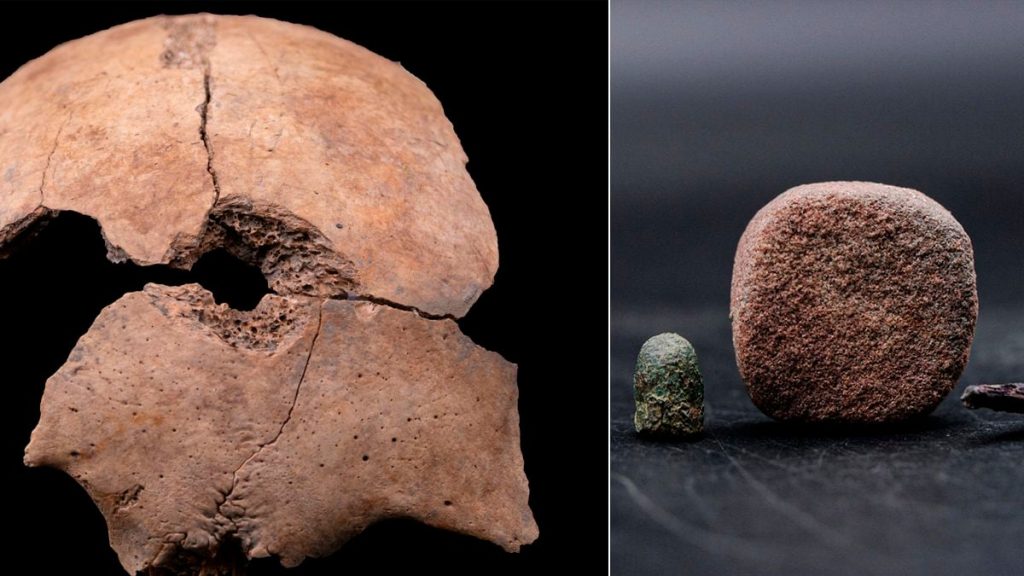In the Barranco de Víznar (Granada), archaeologists have found the remains of a child between 11 and 14 years old who was shot during the Spanish Civil War. He was shot twice: one bullet pierced and fractured his skull, while the other was still inside. Alongside the bones, a drawing pencil and an eraser were discovered. The child does not have a known identity, as no historical sources mentioned a child being executed in the area. It is believed that one of the other 14 victims found in the mass grave may be his father. DNA analysis at the University of Granada will confirm this. If no relatives are found, the remains will be reburied in a memorial with other unidentified victims. So far, 124 individuals, including 34 women, have been recovered from 17 graves in the area, with an estimated total of around 200 individuals. Identification efforts are ongoing for approximately 50 descendants.
It is common for the skeletons found in Franco-era mass graves to belong to young individuals, but the discovery of a child’s remains is particularly tragic. In 2010, actor Javier Bardem voiced the story of Francisco Escribano, an 18-year-old whose remains were found in a mass grave in Fontanosas (Ciudad Real) alongside six others, including his father, uncles, and cousin. A letter written anonymously in 2004 led to the discovery of the grave, where one victim was identified as a minor. The excavation revealed that there were more victims, including the brother of José Escribano, a shepherd, who was among those executed. The work in the Barranco de Víznar is funded by the central government and supported by the Andalusian regional government, led by Juan Manuel Moreno Bonilla of the Popular Party. Unlike other regions where far-right party Vox holds power, no issues have arisen in this area concerning the excavation work. According to Carrión, this work is a matter of human rights and should not be subject to historical revisionism.
The emotional impact of these discoveries is significant for the archaeologists involved in the excavation. Finding the remains of a child who was executed during a brutal period in history is heartbreaking. The uncertainty surrounding the child’s identity and the search for potential relatives adds to the complexity of the situation. With limited funding in the past for scientific excavations, many families of missing individuals may never receive closure. The commitment to uncovering these hidden truths is essential for acknowledging the atrocities committed during the Spanish Civil War and honoring the memory of the victims. The collaboration between different entities and the dedication of the archaeologists involved highlight the importance of preserving historical memory and upholding human rights.
The challenges of identifying and honoring the victims of the Spanish Civil War continue to present themselves in various parts of Spain. The recent efforts in the Barranco de Víznar shed light on the ongoing work to uncover the truth behind the atrocities committed during this dark chapter in history. Each new discovery, such as the child’s remains found in the mass grave, serves as a reminder of the human cost of war and the importance of remembering those who suffered. By bringing closure to families and ensuring that the victims are properly commemorated, the archaeologists and researchers involved in these efforts are contributing to a broader understanding of the past and the need to confront difficult truths.















